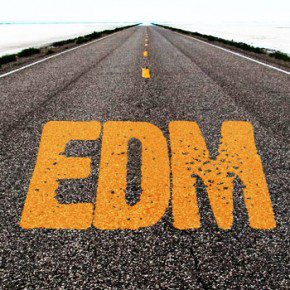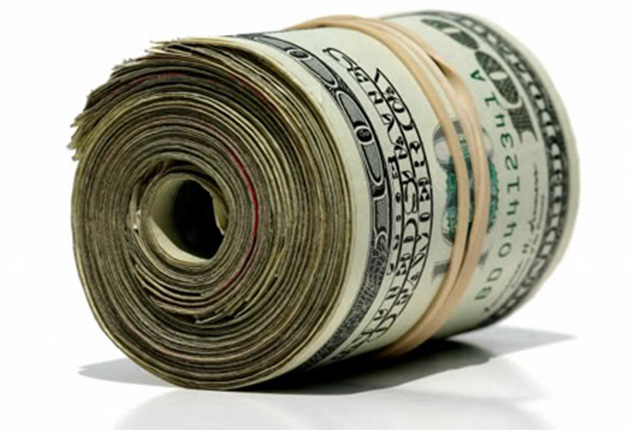You know how, when you see one of those get rich quick schemes on late night television, the back pages of your local alternative weekly, or on Craigslist, the promises of unlimited income always seem too easy and too good to be true? That could be what EDM is starting to seem like to companies buying up promoters and being associated with events.
In one sense, EDM has everything going for it: A lengthy history, concert ticket sales that continue to grow, singles now going to the top of the Billboard Hot 100, and a consistent following, not to mention a significant amount of activity on the internet, with fans and DJs often ahead with the latest technology.
But, media attention since August has focused on whether EDM is a “sure thing” for promoters and companies like Live Nation and S.F.X. Entertainment, or now something that’s starting to look more and more like a get rich quick scheme that’s beginning to fall apart.
The question is not whether EDM itself has released a bubble; a fan following, even once the neon-clad college students turn to something else, will remain regardless, albeit in a smaller degree. It’s more along the lines of, “Who’s actually making money?” Rather than a storyline straight out of a hackneyed Hollywood script about child stars seeing parents and managers siphon off earnings, all while getting seriously jaded in the process, the industry’s path appears to turn in the artists’ favor, while promoters and the companies buying them up all sort of seem a few steps away from being financially screwed.
A Dollar Makes…The DJ Holler
An answer to this question essentially goes back to Forbes annual list of top-earning DJs. This year, surprisingly, Calvin Harris came out on top, with $46 million. The magazine points out the “Feel So Close” producer earned more than Jay Z, Katy Perry, and Rihanna and now commands $300,000 for a gig that just requires an SD card to plug in with the club’s equipment.
 Although others command such high fees and do over 100 gigs per year (Avicii alone did roughly 300 last year and likely gets a similar fee), Harris’ significantly higher earnings come not from DJing gigs but from a songwriting contract with Sony/ATV Music Publishing, from which he reportedly got a large advance. For those who can recall, Harris released two albums prior to 18 Months that had an electro-pop sound and involved performing with a microphone and backing band, and even though he’s since switched to primarily being a producer, he continues to write his songs.
Although others command such high fees and do over 100 gigs per year (Avicii alone did roughly 300 last year and likely gets a similar fee), Harris’ significantly higher earnings come not from DJing gigs but from a songwriting contract with Sony/ATV Music Publishing, from which he reportedly got a large advance. For those who can recall, Harris released two albums prior to 18 Months that had an electro-pop sound and involved performing with a microphone and backing band, and even though he’s since switched to primarily being a producer, he continues to write his songs.
But once you go down the pipeline, the return on investment starts to seem less sure. The next step – the clubs attracting these highly-paid DJs – could be the first ones to find betting on EDM is far less dependable than it looks.
As an example, Hakkasan and other Las Vegas Strip clubs, profiled in Forbes, have investors putting in anywhere from $25 million to $100 million. Even with $50 covers, clientele spending $100 on alcohol, and some even throwing down $10,000 for a table when a major DJ is playing, the clubs still have yet to see a return. Forbes predicts that, from a financial standpoint, these entities won’t see a true profit for at least five years.
While Las Vegas’ revenue felt a hit during the Recession and the DJ attractions have assisted with the city’s recovery, EDM doesn’t have to be the variable attracting people to the Strip. After all, Britney Spears scored a two-year club residency and could set a trend for faded pop stars cooling their heels, while attracting die-hard fans, in Sin City for a while.
But maybe, just maybe, the Las Vegas clubs might steer away from a path similar to Manchester’s the Hacienda. Or, electronic dance music history could be repeating itself, as the promoters aren’t informed – and frankly don’t care about – the genre’s decades of history. If EDM and its events are just a theoretical Hacienda club in the U.S., then Robert F.X. Sillerman is Tony Wilson, with smaller promoters like Donnie Disco Presents his New Order and acid house DJs.
New Yorker profile “Can Wall Street Make Money from Raves” paints two sides to Sillerman: He’s no novice (he bought up radio stations back in the ‘80s and ‘90s), and while he’s had his sights set on Donnie Disco Presents, Life in Color, and Made Event (and eventually convinced the former of the three), his operation’s not exactly financially sound. Specifically, S.F.X. Entertainment lost $49 million on revenue of $242 million. Live Nation’s in a similar spot, betting somewhere between $50 million and $100 million on Electric Daisy Carnival promoter Insomniac Events.
While this might be good for the smaller promoters, companies like Donnie Disco Presents are losing money themselves. Billboard pointed out that, even with the 600-plus events Donnie Disco put on last year, it still lost money. Not only did S.F.X. Entertainment buy it up, but Sillerman filed for a $175 million IPO, which reportedly will help S.F.X. fund more promoters. The only problem is, Sillerman’s acquisition is operating at a loss.
The Beginning of the End?
Even as much as EDM’s branded the new hip-hop, no sure ROI might be the first sign the genre’s headed back to the underground (or, to the place where even its most high-profile performers are still unknowns in mainstream music), but the festival-dependant business model might be the first sign something’s about to go wrong.
 The New Yorker profile explained that canceling an event early or association with drug usage, such as what happened at Electric Zoo this past year, kills brand sponsorship. Similarly, The Quietus, more likely to write about Depeche Mode than Dash Berlin, compared the genre’s rising popularity of EDM in the U.S. to the video game industry in the ‘80s, when even food brands put their own nonsensical Atari system games on the market and when, notoriously, no one bought the E.T. video game.
The New Yorker profile explained that canceling an event early or association with drug usage, such as what happened at Electric Zoo this past year, kills brand sponsorship. Similarly, The Quietus, more likely to write about Depeche Mode than Dash Berlin, compared the genre’s rising popularity of EDM in the U.S. to the video game industry in the ‘80s, when even food brands put their own nonsensical Atari system games on the market and when, notoriously, no one bought the E.T. video game.
Although the comparisons hold, such as comparing the ‘80s video game youth culture with today’s internet-based one, what The Quietus ignores is evolution. Yes, the early ‘80s garbage video games might have cost the industry a major hit, but it evolved. The question remains, will EDM do the same?
There’s a chance it may, and there’s a chance it might not. From a musical standpoint, there’s an inkling it will, but in terms of sales, it’s too cloudy to determine a clear answer. For instance, Avicii’s “Wake Me Up” single appeared to be a huge artistic and commercial misfire back at Ultra 2013, but now, the track’s even on country radio and gave the Swedish producer prodigy a top 10 hit on the Billboard Hot 100 – a fete that surpasses even his breakout hit, “Levels.” Even if country-house isn’t the next big thing, it’s a modicum of a hint that’s the genre is going someplace different.
On the other hand, what’s cool today becomes lame tomorrow, and the internet speeds this up even faster. Along the notion that building an industry based primarily on internet trends is tenuous at best, take Kreayshawn, the Oakland, Calif., female rapper that went from YouTube star to a huge musical flop when her album came out months later.
Although EDM artists have proved to be more dependable than the “Gucci Gucci” rapper, small signs have started to indicate this high won’t last forever.
Case in point, Billboard mentions that TomorrowWorld, the U.S. incarnation of the long-running European festival TomorrowLand, isn’t doing well for ticket sales. Although this simply could be a fluke (Sensation, another festival crossover, hasn’t been doing too bad), we’ll have to see whether this is simply an errant drop or the start of what could become a ripple effect that spreads to Ultra, EDC, and their promoters.




